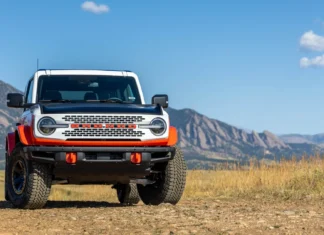SPONSORED CONTENT
Regarding luxury cars, BMW is a brand that often comes to mind. BMWs are the epitome of automotive excellence, known for their high-performance engines, sleek designs, and advanced technology. However, the price tag of a new BMW can be prohibitive for many. Fortunately, buying a used BMW can be an excellent way to enjoy the luxury and performance of this prestigious brand without breaking the bank. This article will explore the benefits, considerations, and tips for buying a used BMW.

The Appeal of BMW
BMW has established itself as one of the leading luxury automobile manufacturers globally. The brand is synonymous with performance, innovation, and sophisticated design, making it a favorite among car enthusiasts and those seeking an elevated driving experience.
Driving Dynamics and Performance
BMWs are engineered with a focus on driving pleasure, often encapsulated in the brand’s slogan, “The Ultimate Driving Machine”. BMW offers a range of engines, from the efficient and smooth inline-four to the powerful and throaty V8 and V12 options. The brand is also a pioneer in turbocharging technology, ensuring robust performance across its lineup.
BMWs are also known for their exceptional handling, thanks to features like rear-wheel drive, balanced weight distribution, and advanced suspension systems. These elements provide a responsive and engaging driving experience, whether navigating city streets or taking on winding country roads.
Luxurious Interiors
BMW’s interiors are designed to be both luxurious and functional, providing a comfortable and technologically advanced environment. Using premium materials, such as fine leather, polished wood, and brushed aluminum, ensures a sophisticated and comfortable cabin experience. Attention to detail is evident in every aspect, from the stitching on the seats to the finish of the dashboard.
The interiors are meticulously designed with the driver in mind. Controls are intuitively placed, seats are supportive, and the driving position is optimized for comfort and visibility. BMW incorporates the latest technology into its vehicles, including advanced infotainment systems, digital displays, and driver assistance features. The iDrive system, for example, is a hallmark of BMW’s technological innovation, offering intuitive control over navigation, entertainment, and vehicle settings.
Iconic Styling
BMW vehicles feature a sleek, aerodynamic design characterized by the iconic kidney grille, aggressive front fascia, and flowing lines. Each model is crafted to not only look good but also to enhance performance and efficiency. From the compact and agile 3 Series to the luxurious and spacious 7 Series, BMW offers many models to suit different preferences and needs. Their SUVs, such as the X Series, combine rugged capability with refined style.
Innovation and Sustainability
BMW is at the forefront of automotive innovation, continuously pushing the boundaries of what’s possible. With the introduction of the BMW i Series, the brand has made significant strides in electric and hybrid technology. Models like the i3 and i8 showcase BMW’s commitment to sustainability without compromising performance.
BMW is heavily invested in the development of autonomous driving technology. Features such as adaptive cruise control, lane-keeping assist, and automated parking systems are already available in many models, paving the way for a future with fully autonomous vehicles. BMW is dedicated to reducing its environmental impact through sustainable manufacturing practices, using recyclable materials, and initiatives to lower emissions across its vehicle lineup.
Benefits of Buying a Used BMW
Used BMW for sale in Philadelphia offers many advantages, from significant cost savings to access to high-end features that might be out of reach with a new car. Here, we’ll delve deeper into the key benefits of purchasing a pre-owned BMW.
- Cost Savings: One of the most significant advantages of buying a used BMW is the lower purchase price. Luxury cars depreciate quickly, which means you can often find a well-maintained, relatively new BMW for a fraction of the cost of a new one.
- Luxury and Performance: Even older BMW models have high-end features and powerful engines. Buying used allows you to enjoy the same level of luxury and performance that you would in a new model.
- Depreciation: New cars lose a significant portion of their value in the first few years. Purchasing a used BMW avoids the steepest part of the depreciation curve, making it a smarter financial choice.
- Certified Pre-Owned (CPO) Programs: Many BMW dealerships offer Certified Pre-Owned programs. CPO vehicles have been thoroughly inspected and come with extended warranties, providing peace of mind similar to buying new.
Considerations When Buying a Used BMW
Buying a used BMW can be an excellent decision, offering luxury and performance at a reduced cost. However, carefully considering the purchase is important to avoid potential pitfalls. Here are some key factors to remember when buying a used BMW.
- Maintenance and Repairs: While BMWs are known for their quality, they can be expensive to maintain and repair. Ensure you have a trusted mechanic specializing in European cars, and consider purchasing an extended warranty for added protection.
- Vehicle History: Always check the vehicle history report to ensure the car has not been in any major accidents and has been well-maintained. Services like Carfax or AutoCheck can provide this information.
- Model and Year: Research different BMW models and years to find the one that best suits your needs and budget. Some models may have better reliability ratings or lower maintenance costs than others.
- Inspection: Have a pre-purchase inspection performed by a qualified mechanic. This can uncover hidden issues that may not be apparent during a test drive.
The Bottom Line
Buying a used BMW can be a smart way to experience the luxury and performance of this iconic brand without the hefty price tag. You can find a high-quality used BMW that will provide years of driving pleasure by researching, setting a budget, and carefully inspecting potential purchases. With the right approach, you can enjoy the best of both worlds: luxury and affordability.

















































